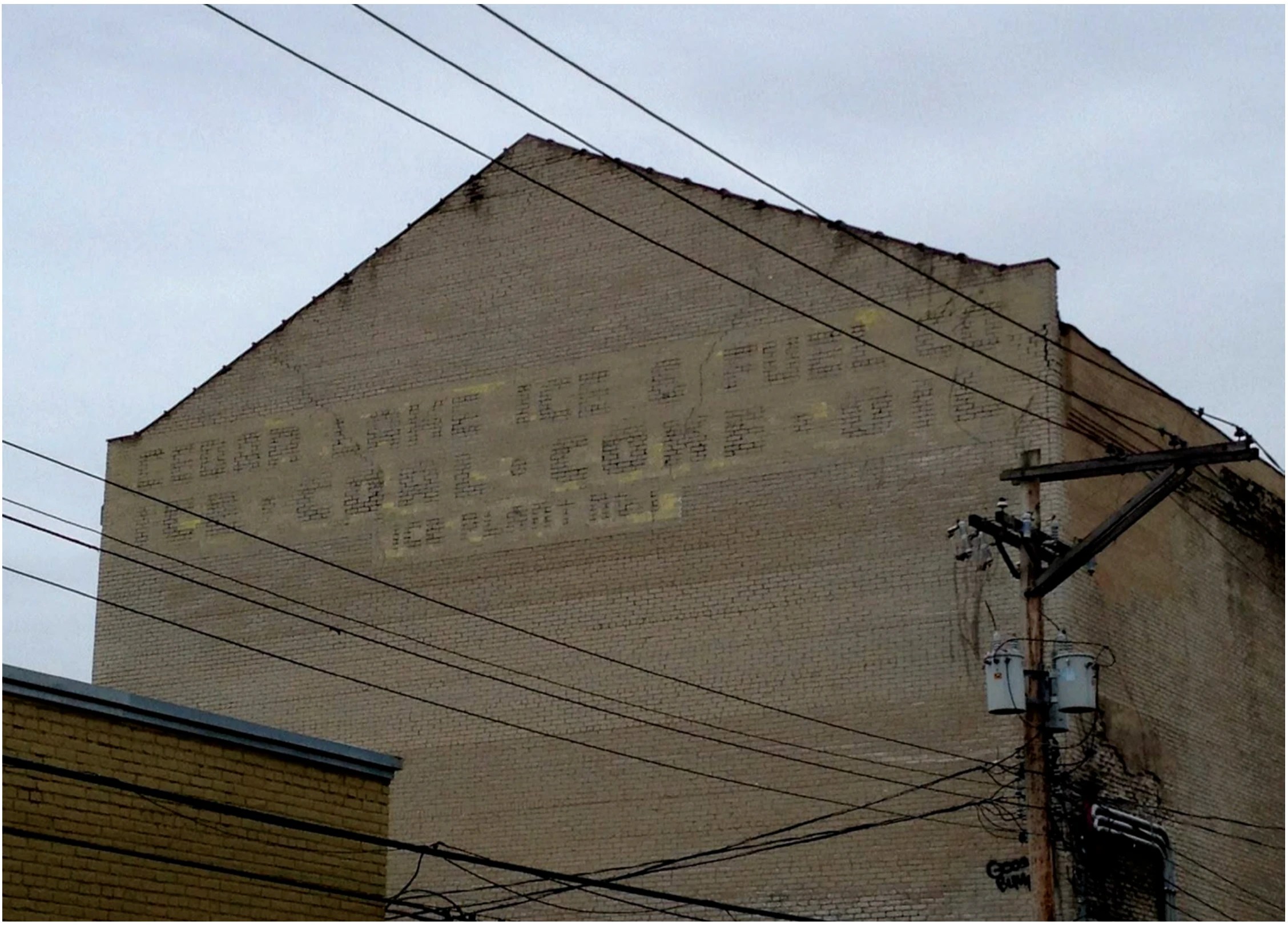“It’s as warm as the winter of 1877!”
It’s not quite a saying, but it is true. We are having an unusually warm winter but not record setting — yet.
Although winter sports enthusiasts gripe and others rejoice at the dearth of snow, for the residents of Minneapolis living 140 years ago a warm winter would be more than a conversation topic as it would have been devastating to the important ice business.
At that time, people did not have the modern convenience of refrigeration and ice makers. Instead, they depended on a 15-inch ice layer that would ensure fresh food and cool drinks in the summer months as well as provide an income for many who worked in the ice industry.
One of the largest and most established ice dealers in the area, the Cedar Lake Ice Company, harvested as much as 75,000 tons of ice per year from the late 1800s until the1940s. During their 60 years, CLIC had a booming business with several distribution locations around the city and served a tri-state area.

The Ice Trade
Although people had cut and stored ice for personal use, the first person to harvest ice on a large scale as a business was Frederic Tudor.
In 1806, Tudor began an ice trade that cut blocks of ice from New England ponds and shipped them to the Caribbean. The business had plenty of obstacles, including initial heavy losses when the shipments took longer than expected with insufficient insulation.
So, Tudor went big and shipped his ice to India — a 16,000-mile journey — where he established a market and turned a profit. When Tudor died in 1864, he was a millionaire, and the ice trade was a vibrant business with many dealers.
Minneapolis businessmen recognized that the free ice on their lakes offered similar economic opportunities, and around 1868 the Minneapolis ice business started.

Cedar Lake Ice Company
In 1900, the Minneapolis Business Directory listed fifteen ice dealers. One of the oldest and most established was the Cedar Lake Ice Company. It seems that the company formed about 1879 when Sutton’s Ice Company merged with E.C. Babb’s company.
Both were probably cutting ice on Cedar Lake and perhaps merged because of the shortage of ice in 1877-78. They continued to grow the company, sometimes called the Cedar Lake, Calhoun, & River Ice Co., and added many storehouses around the city, allowing their ice delivery wagons to avoid longer trips with melting cargo as they made home deliveries.

The Ice Harvest
In the employment section of the Minneapolis Tribune on January 10, 1907, it says, “Teams Wanted. 75 teams to haul ice Thursday morning from Crystal Lake to James Ave N and 25th. CEDAR LAKE ICE CO.”
Another advertisement on the same page offered employment to men who would work in the ice houses loading cars. These cars referred to rail cars that would transport ice and perishable food.
The ice harvest could start after the ice had frozen to a sufficient thickness. Once the ice was about 15 inches thick, it was strong enough to support the weight of the men, horses and equipment as well as thick enough to produce ice blocks for efficient use.
An article in the Mankato Free Press explains the process. The ice equipment included long two-handed saws, giant tongs, chains, ropes and horse-drawn ice plows to score the ice and wagons to haul it to storage in ice houses. The ice was cut into 18 inches by 24 inches blocks that teams with sleighs hauled to shore with chains and loaded into horse drawn wagons or sleighs to be taken to the storage barns.
The greatest danger for workers was falling into open water, especially just before daybreak when one may not be able to see certain slippery edges on the ice. The harvesting was often done in the dark when colder. The work would stop if the temperature reached 35 degrees.
A crew of men in each barn would arrange the ice blocks and cover them with a 10-to-12-inch layer of sawdust which acted as an insulator to slow melting.
In fact, in a good icehouse the ice could last until the following winter. These jobs paid well. When the average American worker earned only $200-$400 a year in 1906, Cedar Lake Ice Company paid $60 a month to its icehouse employees.

The Local Delivery System
Cedar Lake Ice Company was also streamlining the ice delivery service. The company issued coupon books for 500 pounds of ice. Each coupon was for a 25-pound delivery. The recipient would place an “Ice Today” sign in the window to alert the delivery man.
The delivery person would carry the ice with his large tongs on his leather-clad shoulder to the icebox. Some houses had an access door to the icebox from the porch so that the iceman would not have to enter the home, as seen in the Purcell-Cutts House on Lake Place.
The recipient would give a coupon in exchange, so the driver did not have to handle money or transactions. No price is listed in the coupon book. However, in 1908 CLIC’s advertisement in the Minneapolis Tribune said, “WHY FREEZE YOUR OWN ICE when Cedar Ice Co boxes it for 4 times per week for $1.00 per month.”
The icebox, invented in 1802 by American cabinet maker Thomas Moore, was typically made of wood, lined with tin or zinc and insulated with sawdust. The ice block would last one or two days during the hot summer months. A small drain built into the icebox would direct the melted ice water into a pan underneath the icebox. This pan had to be emptied frequently to avoid getting water all over the kitchen floor.

Minneapolis Fire of August 13, 1893
There were other dangers associated with the ice business. The sawdust, a cheap insulator readily available from the Minneapolis lumber business, was flammable.
On a hot August day in a series of dry days, a fire started at 1:36 p.m. in a building behind the Cedar Lake Icehouse on Nicollet Island.
The New York Times reported that on August 13, 1893, a large fire burned over a square mile of Minneapolis and destroyed 150 houses and 13 mills. The financial cost was put at over $1 million ($20 million in today's dollars according to my calculations). The Minneapolis Tribune was more dramatic as it described "a scene never to be forgotten.” It vividly depicted the “volumes of smoke [that] walled up as from a burning crater.”
The location of the CLIC storage house on Nicollet Island indicates that the company was well established in 1893 and possibly shipping ice down the Mississippi. The full-page ads in the Minneapolis City Directory listed the main office at 256 Hennepin and showed the company was now run by E.C. Babb, Emerson Cole and D.M. Chute. After rebuilding from the fire, they or their relatives would continue to run the company for another 30 years.

The End of the Cedar Lake Ice Company
For the first time in 1912 the Minneapolis Business Directory had a subheading for Manufactured Ice. However, as the ice companies are listed in both sections, it is unclear which of them sold lake or manufactured ice. Only a few had advertisements specifying. It is safe to assume that the manufactured ice business was growing. CLIC had to evolve and diversify for its survival.
Around 1908 with David Chute as the president, CLIC seems to have acquired the Ice Side Market. CLIC faced a new threat when Minneapolis Artificial Ice was incorporated around 1912. Hygienic Artificial Ice followed in 1921 and with its name suggested that lake ice was perhaps not sanitary or good for one’s health.
In the 1930s, when people began to replace their ice boxes with electric refrigerators, the company added coal delivery, perhaps a fuel business already owned by David and James Chute, and was renamed the Cedar Lake Ice & Fuel Co. This business decision allowed for a year-round delivery service — coal in the winter and ice in the summer — to maximize the use of the wagons or trucks.
The writing was on the wall or perhaps it would be more accurate to say the writing was on the fore edge. Once again, it’s not a saying. However, in 1944, Minneapolis Sanitary Ice had a prominent printed advertisement on the paper side of the Minneapolis Business Directory. This was also the last year that the Cedar Lake Ice Company was listed under Ice Dealers.
It seems that the company sold its fuel business to Northwestern-Hanna Fuel Company as Cedar Lake Coal is listed one last time as a division of that larger company in the 1946 directory. After weathering and accommodating for changes over many years in a growing modern city, the local business finally closed.
The ice from Cedar Lake kept food fresh locally and in transport by rail across the country before electricity became the standard. Starting with only three ice dealers listed in 1869, the Minneapolis ice business had significant growth until electric refrigeration was readily available. The Cedar Lake Ice Company flourished for 60 years and was well-known for employing many people, preserving perishable food and providing a cool drink on a hot summer day.







